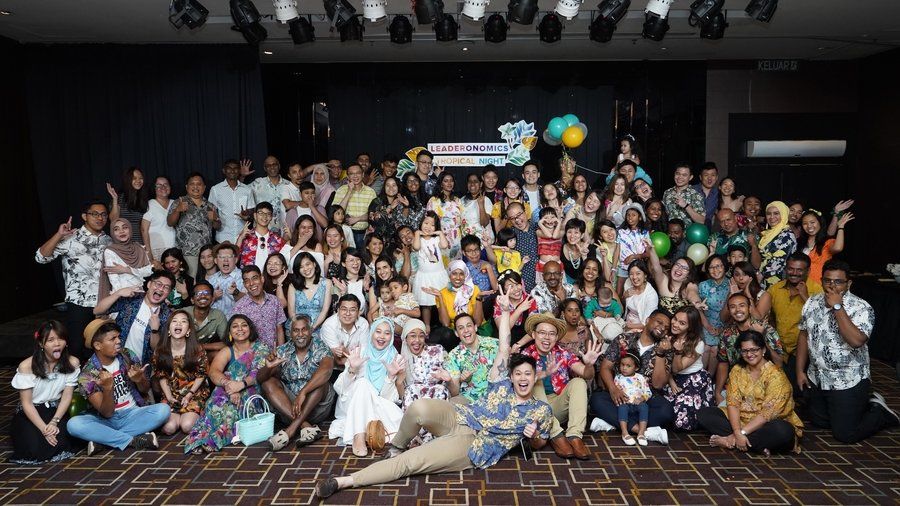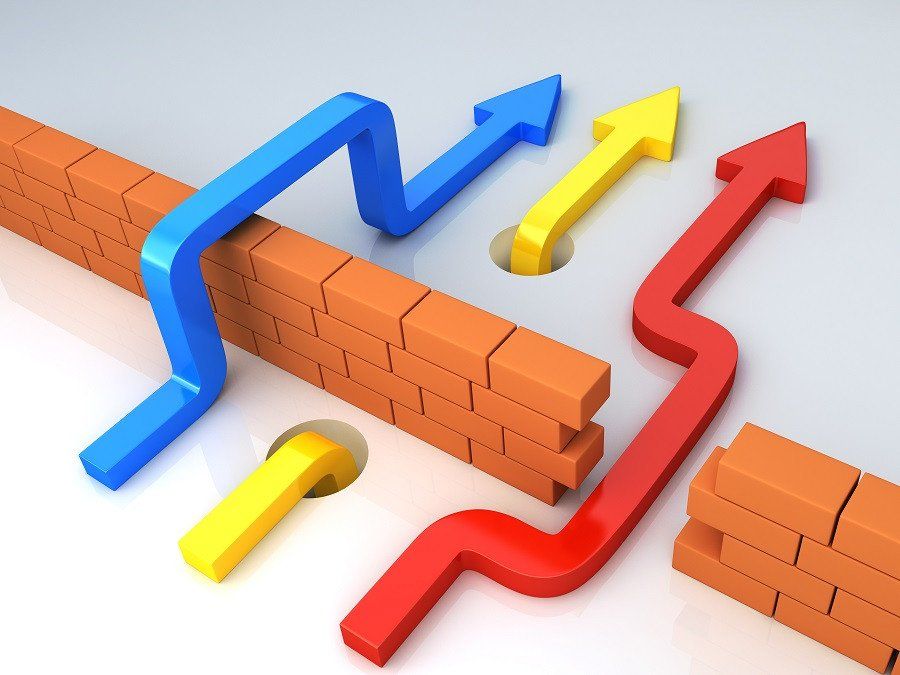HRDF: Plugging The Holes In Your Business

HRDF’s MyFuture diagnostic tool helps rate SME maturity
Small and medium enterprises (SMEs) are the backbone of Malaysia’s economy, forming 97% of local businesses.
A study shows that over 640,000 businesses in the country are small and medium scale companies and the growth of SMEs will help Malaysia realise its vision in becoming a fully industrialised, high-income nation.
With every other business being an SME, business owners are bound to face tough competition and the only way for them to rise above the rest is to continually scale, innovate and adapt to changes as they grow.
For this to happen, businesses must have the competency to diagnose organisational gaps and needs that may impact scalability – and more importantly, productivity – and address them accordingly through the right intervention programmes.
However, an accurate diagnosis cannot be made by just about anyone. It is a niche on its own and engaging a management expert comes at an additional cost.
This is where the Human Resources Development Fund or HRDF’s MyFuture comes into play. MyFuture is a competency diagnostic tool that helps identify training gaps that exist within an organisation.
Designed to help SMEs identify competency gaps within their organisation, MyFuture also proposes the right training and development programmes to address these gaps.
Read also: HRDF: 5 Ways SMEs In Malaysia Can Grow
The best part? The diagnosis and training are all provided free of charge, including for SMEs that are not registered with HRDF. Now, SMEs can have their cake and eat it too and here’s why. . .
Enhancing the SME status
The SME Masterplan is a “game changer” that accelerates the growth of SMEs, driving Malaysia towards becoming a high-income nation by 2020. The SME Masterplan outlined 32 initiatives across all focus areas to achieve the desired goals, comprising six High Impact Programmes (HIPs).
Its main aim is to increase the gross domestic product contribution by SMEs from the current 36.3% to 42% and increase employment rate to 65% in the next three years.
To address the two major concerns which are productivity and innovation, attention must be given to the growth of our local human capital – this includes intervention programmes like training and development.
“We saw this big picture in the SME Masterplan and wanted to come up with an innovative programme that will help the government achieve its goals and create SME champions in the process.
That’s why MyFuture was introduced,” says HRDF’s chief special purpose vehicle officer Muhammad Ghazali Abdul Aziz (better known as Ghaz).
Ghaz says that to help SMEs grow, there should be greater focus on their people. So, reskilling, upskilling and multiskilling the SME workforce is a business imperative.
How do we measure the outcome?
“We check their productivity and innovative competency. There are several measures that we can look at in terms of business expansion, increase in export, innovative business models and increase in productivity,” says Ghaz.
To address the two major concerns which are productivity and innovation, attention must be given to the growth of our local human capital – this includes intervention programmes like training and development.
Since innovative training and development can close critical competency gaps and upskill the local workforce, MyFuture augurs well with the SME Masterplan vision.
This might interest you: HRDF: How Do You Evaluate Your SME’s Performance?
HR maturity model
As a competency profiling tool, MyFuture puts its core focus on analysing SME’s HR processes and systems across several functions like business planning, strategy, recruitment, employee engagement and retention, and performance.
MyFuture uses the HR Maturity Model to analyse HR processes and identify where the business currently stands. There are four levels of maturity that businesses will likely experience.
-
- Level 1 – There are absolutely no HR policies or processes in place altogether
-
- Level 2 – There are basic HR policies and functions in practice
-
- Level 3 – All HR functions are formalised
-
- Level 4 – HR drives business
“We believe that HR can drive businesses. When you’re looking at increasing your market potential, you need to be able to link HR and training to your business,” says Ghaz, explaining that this will set a structure and strategic growth framework in place for businesses to excel.
Overall, MyFuture focuses on – and diagnoses – three areas of concern: the current state of HR maturity, maturity gaps, and strengths and opportunities for improvement.
Once businesses learn their level of maturity, further analysis and surveys are done to identify gaps by mapping out the organisation’s ideal stage of business and drawing a comparison to its current state.
When the gaps are made visible, SMEs would find it easier to decide the next course of action (intervention programmes) and focus their resources on implementing and executing the right programmes to achieve the intended results.
Focus areas
As mentioned earlier, MyFuture looks into several HR functions and processes within an SME. There are 11 specific human capital functions that are assessed using MyFuture, which are:
-
- Recruitment
-
- Manpower planning performance management
-
- Compensation and benefits
-
- Employee value proposition
-
- Internationalisation
-
- Talent management and succession planning
-
- HR management
-
- Training and development
-
- Organisation culture and core values
-
- Employee engagement and communications
These functions are specifically selected as they can be easily benchmarked against similar best practices in other countries.
“Depending on the company’s level of maturity, we propose suitable training programmes for them. For example, if the company sits on Level 1 or Level 2 on the maturity scale, we propose functional training programmes. If they are at Level 3 or 4, then we have strategic training for the higher management,” says Ghaz.
He further explains that most SMEs that have signed up for MyFuture profiling fall between Level 2 and 3, and overlapping training programmes – covering both functional and strategic areas – are proposed to them.
“We do not give a particular time frame or force the companies into training programmes. It all depends on the company and their hunger to expand.
“We begin offering strategic training programmes because we have seen many companies with expansion capabilities,” says Ghaz.

Innovative training programmes
HRDF has a variety of courses and programmes offered to participating companies, and these are conducted by selected training providers.
Some of the training programmes that are available include functional programmes like leadership and performance management, financial accounting system, customer relationship management, managerial accounting for CEOs and international marketing.
Business leaders of some companies are sent for training courses overseas and all expenses are borne by HRDF.
“This is because we have some tie-ups with institutions abroad that have the right expertise.
Overseas training programmes also provides a lot of exposure to the participants as they get to experience site visits and networking benefits,” adds Ghaz.
Selected Level 3 and Level 4 senior managers are also given access to the Harvard Business Publishing Programme where they can sit for online modules at their own pace to expand their business knowledge and expertise, particularly for mid to senior management personnel.
All data is protected under Personal Data Protection Act and HRDF has a tight security policy that protects the confidentiality of data so companies do not have to be afraid of any breach of data.
“This programme is not cheap and can cost US$5,000 per licence but because HRDF has purchased bulk licences, selected SMEs able to access it for free,” he says adding that there are over 40 modules in the programme covering a range of business topics.
Over 200 companies have benefited through this programme to date.
Lack of awareness
Despite such strong support, not all SMEs seem to be aware of the existence of MyFuture.
“Perhaps they feel that there are hidden costs or that they will have to pay for the programme but I can assure you that HRDF absorbs all costs, and if they do pay for something, they are reimbursed accordingly.”
Ghaz adds that some companies may be afraid to divulge personal data but all data is protected under the Personal Data Protection Act and HRDF has a tight security policy that protects the confidentiality of data so companies do not have to be afraid of any breach of data.
To date, 800 SMEs – mostly from the service sector – have taken part in this programme but MyFuture can cater to over 1,000 businesses.
“There is still space and we welcome all SMEs to participate. All they have to do is write to us indicating their interest and we respond with a survey link,” says Ghaz.
According to him, SME employers who’ve taken part in the programme have found it beneficial as they were able to see clearly the areas for improvement and it helps them stay focused on closing the apparent competency gaps of their workforce.
“You will not be able to see the results immediately but you can measure the outcome by checking your employees’ productivity level, increases in profit, export growth and more when you take the necessary steps to improve your business,” he says.

MyFuture 2.0
Moving forward, HRDF is in the midst of developing the MyFuture Diagnostic Tool, version 2.0. This upgrade will focus more on innovation and productivity.
With MyFuture 2.0, SMEs that have participated in the existing MyFuture can choose to answer a questionnaire that gauges their productivity and business innovativeness.
This is a programme that other organisations can easily use. Our intention is to equip Malaysia’s human capital with the right talent and skills to fast track their growth.
“While 1.0 talks about the 11 HR spectrum which covers productivity and innovation on a broader perspective, MyFuture 2.0, will generate reports that are specific to strengths and weaknesses (gaps) of employees in the area of productivity and innovation,” adds Ghaz.
MyFuture 2.0 is expected to be rolled out by HRDF in August 2017.
HRDF is confident that its MyFuture diagnostic tool will help realise the vision drawn out in the SME Masterplan apart from scaling local businesses to be of international standard.
“This is a programme that other organisations can easily use. Our intention is to equip Malaysia’s human capital with the right talent and skills to fast track their growth.”
“Grants and incentives are limited, so when an organisation is awarded with one, they should be able to use it accordingly. This is where we can help equip your workforce with the right skills,” says Ghaz.
Aside from being the catalyst for businesses to grow, MyFuture helps SMEs choose the right intervention for their business that can result in high impact business outcomes.
Related post: 10 HRDF Financial Schemes And 4 Initiatives You Probably Didn’t Know Of
To participate in MyFuture, SMEs need to submit the following information:
-
- MyCoID (business registration number)
-
- Company name
-
- Business owner’s e-mail address
-
- Business owner’s contact number
- Number of employees
To express interest or participate in MyFuture programme, applicants are advised to submit the required company information to HRDF by e-mailing to:
Nur Afiyas Daud
nurafiyas@hrdf.com.my
03-2096 4836
Muhammad Zulfadli Soid
mzulfadlisoid@hrdf.com.my
03-2096 4957
Business







